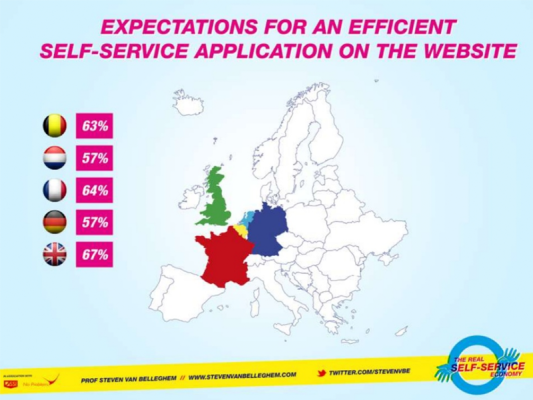Remember the days of AOL Instant Messenger? As a kid, AOL Instant Messenger (AIM) was the most popular way to talk to friends after school. But part of the fun of AIM was the seemingly intelligent chatbots we could talk to!
I had countless conversations with SmarterChild, one of the first chatbots ever made. You could ask for movie times or current weather, or engage in some simple conversations. Yet, they never actually felt real. Even as a child, I knew these were most likely canned responses, and not a bot learning how to talk.
But that's just the humble beginnings. Chatbots have evolved entirely with the addition of artificial intelligence. AI-powered chatbots are now used by some of the world's largest brands (and even Smartling) to provide users with quick, easy and intelligent support on websites and even in mobile apps. Even in different languages!
Multilingual chatbots are one of the most effective and efficient ways your brand can provide customer support to users in their native language.
Multilingual support is key
And that’s a good thing because customers highly value the support your business can provide. According to HubSpot, 60% of customers stop doing business with a brand after one poor service experience.
On the flip side, 50% of customers increase the size of their purchase with a brand after a positive customer service experience.
As we also uncovered in our recent Retail Data Report, customers prefer to buy in-language. Brands that offer localized experiences to their customers achieve stronger growth rates than those that don't translate.
Therefore, to close the entire loop and offer an amazing brand experience, you'll need to not only localize your product information, sales offerings, and website content but your support content as well.
Customers demand in-language, self-service support
According to research compiled by Steven Van Belleghem, a thought leader on the transformation of customer relationships, 70% of customers expect a company they're buying from to include a self-service application on their website. What's more interesting is that the research goes to break this down by country:

Even when we zoom in on Europe, the story is much the same: More than 50% of customers expect self-service options.

Additionally, according to this same research, 40% of customers globally prefer self-service to human contact. While not the majority, that's still a big number.
So this paints a picture: the majority of users expect self-service options, and at least 40% prefer it.
How, then, do we give them what they want? With multilingual chatbots of course.
Multilingual chatbots are the answer
One strategy we recommend is simply to start small: translate and localize your support center's most frequently asked questions and most read help articles. This will provide the user with immediate access to the information they need.
But chatbots do more than just answering questions. They can be used to:
- Convert more website traffic by engaging visitors
- Generate more qualified leads and uncover important info about prospects
- Automate business processes to save time
- Elevate your customer service with a personal touch
Chatbots can be seen as your brand's "first line of defense," handling incoming support requests, collecting information, and routing customers to the appropriate resource.
To assist customers with their inquiries, they can pull up help articles, send links to appropriate web pages, answer basic questions, and even set up a sales or support call for the customer.
As your first line of defense, chatbots reduce the number of human agents necessary to provide complete support to your full customer base.
Utilizing live human agents in your primary market might make sense, but when you begin to branch out around the world, this can quickly become expensive.
Conversational multilingual chatbots
As AI and Natural Language Processing (NLP) have advanced, chatbots have begun to enter the conversational realm. By interpreting the customer's request, these bots can engage the customer with follow-up questions to learn more.
Called Conversational AI, these bots apply NLP and are trained before deployment to understand customer intent and needs for each unique use case.
Additionally, these chatbots make it even easier to provide multilingual support by engaging customers in a life-like, in-language conversation.
How do chatbots know what language to speak?
Part of what makes chatbots so great for multilingual support is the ability to detect a customer's language, most commonly through one of four methods:
- IP based - Chatbots can determine the location and native language of a visitor based on their device's IP address.
- Customer selection - Simple and effective but not so seamless, customers can choose their preferred language before an interaction begins.
- Web browser settings - Another great way to serve a frictionless experience, chatbots can detect the language setting of the visitor's web browser and default to the same language.
- HTML language attribute - HTML can be used to detect the language of content and tailor the chatbot's responses to that speaker's native language.
Chatbots will typically use advanced Neural Machine Translation engines to provide instant responses, enabling them to adapt to a large number of languages on the fly. AI-powered chatbots on the other hand may need to have responses translated by a human ahead of time.
Meet customers where they are
Fostering a positive brand experience is more than just creating a frictionless sales experience, but includes supporting that customer down the road as well.
And that's the beauty behind utilizing chatbots for multilingual support. Your brand can provide in-language support for users around the world without adding extra staff or costly resources in new markets.








